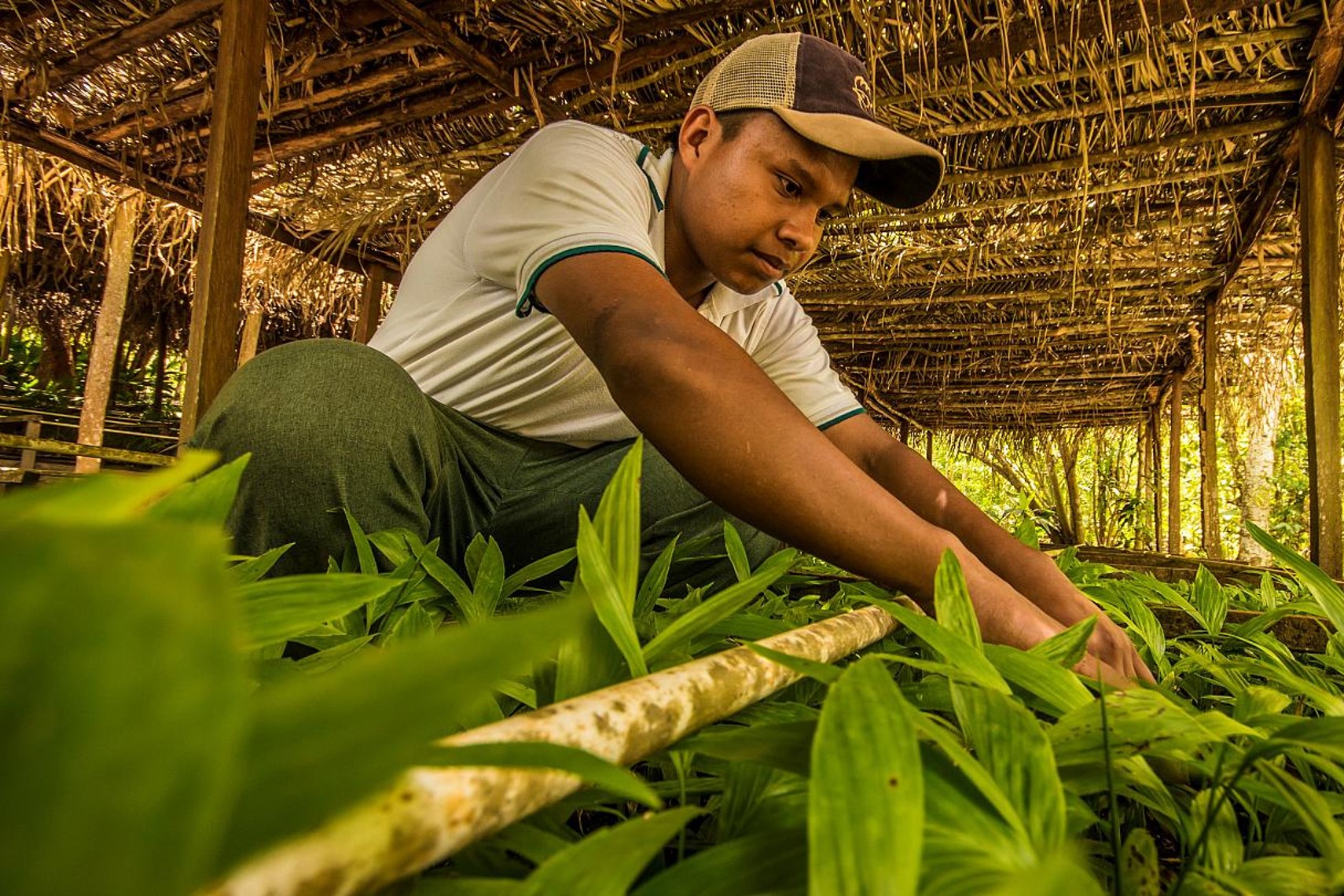Alain Romero is the Founder of Forests to Fortune, and specializes in impact investing through premium tropical hardwood cultivation. Leading a team managing $100 million in biodiverse assets, he combines fintech innovation with regenerative forestry to create liquid natural capital investments while restoring vital ecosystems.
Abstract: (75 words) As global wealth reaches unprecedented levels, a unique investment opportunity emerges at the intersection of biological scarcity and luxury demand. Cultivated tropical hardwoods, facing irreversible supply constraints and soaring demand, offer verified 12.33% IRRs while contributing to environmental preservation. This analysis explores how these assets combine biological growth with premium market appreciation potential, creating a new paradigm in impact investing.
The Ultimate Luxury: How Cultivated Tropical Hardwoods Are Becoming Nature's Most Coveted Asset
Nature's Scarcest Resource In the realm of luxury assets, a new scarcity surpasses even the rarity of diamonds. Premium tropical hardwoods, traditionally the material of kings and craftsmen, face an unprecedented biological bottleneck. According to the Global Forest Resources Assessment, of our world's estimated 3 trillion trees, only 800 billion exist in tropical regions, and less than 1% are commercial hardwood species. This scarcity isn't merely market-driven; it's fundamentally biological.
Market Evolution and Wealth Creation The global wealth landscape has transformed dramatically, reaching $454 trillion in 2023, as reported in the Credit Suisse Global Wealth Report. Premium hardwoods occupy a unique position at the intersection of luxury and sustainability. The World Bank values the global tropical timber market at $252.3 billion, experiencing fundamental restructuring as natural supplies diminish and demand for certified regenerative sources soars.
Supply Constraints Driving Value Traditional source countries have implemented increasingly stringent harvesting restrictions. The International Tropical Timber Organization reports a 95% reduction in natural Mahogany stocks since the 1950s. Brazil, once the world's primary source, has virtually ceased exports. Similar patterns emerge across Southeast Asia, where Vietnam and Thailand have banned natural forest harvesting entirely.
Biological Growth Advantage Unlike traditional assets, cultivated tropical hardwoods offer something remarkable - biological growth independent of market conditions. Restor.eco monitoring confirms predictable growth patterns of premium species like Mahogany, Spanish Cedar, and Rosewood. According to BlackRock's Alternative Investment Outlook, during the 2008 financial crisis, while the S&P 500 plunged 38%, timber values increased by 9%.
Environmental Impact and Certification Each hectare of cultivated hardwoods provides significant environmental benefits. The Forest Stewardship Council verifies these plantations' contribution to biodiversity enhancement and carbon sequestration. CITES trade data shows certified sustainable sources commanding premium prices, creating additional value through ecosystem services verification.

Market Demand Evolution The premium hardwood market approaches a historic inflection point. Morgan Stanley's Asia Luxury Report projects the Asia-Pacific region will account for half of global luxury spending by 2025. China's luxury furniture market alone has reached $87 billion, growing at 15.3% annually according to the Asian Development Bank.
Investment Performance Metrics Verified biological growth data demonstrates compelling returns:
- 12.33% projected IRR based on documented growth rates
- Natural inflation hedge, outpacing CPI by nearly 10% annually
- Low correlation to traditional assets, verified by JP Morgan's Alternative Investment Analysis
- Tangible asset backing with a growing scarcity premium
Access and Market Entry While institutional investors have long understood timber's portfolio benefits, tropical hardwood cultivation requires specialized expertise. The World Resources Institute identifies key barriers:
- Specific climatic requirements
- Extensive land needs
- Complex regulatory compliance
- Certification standards
Future Outlook As developing nations implement stricter logging bans and CITES protection expands, legally harvested premium hardwoods face unprecedented constraints. The European Forest Institute projects this supply-demand imbalance to intensify through 2030.
Conclusion Cultivated tropical hardwoods represent a rare confluence of biological scarcity, market demand, and environmental value. As natural supplies diminish and wealth creation drives luxury demand, the value proposition becomes increasingly compelling. For investors seeking portfolio diversification, inflation protection, and positive environmental impact, these assets offer unique characteristics - combining the stability of biological growth with the appreciation potential of a premium asset class.
The opportunity transcends traditional investment metrics. It represents a chance to participate in environmental restoration while capturing the value appreciation of an increasingly scarce luxury commodity. As we face growing environmental challenges and shifting market dynamics, cultivated tropical hardwoods emerge as perhaps the ultimate luxury asset.
For more information contact Alain@foreststofortune.org

References:
Academic & Research Publications:
- Crowther, T., et al. (2023). "Global Forest Resources Assessment 2023." Nature Forestry, 584, 365-376.
- Meyfroidt, P., & Lambin, E. (2023). "Forest Transition and Tropical Hardwood Markets." Annual Review of Environment and Resources, 48, 159-182.
- Zhang, H., & Wilson, B. (2024). "Luxury Wood Markets in Emerging Economies." Journal of Forest Economics, 39(1), 73-89.
Market Reports & Financial Analysis:
- Credit Suisse (2023). "Global Wealth Report 2023." Credit Suisse Research Institute.
- Morgan Stanley (2024). "Global Luxury Markets: Timber & Hardwood Sector Analysis."
- BlackRock (2023). "Alternative Investments Outlook: Natural Resource Markets."
- JP Morgan (2024). "Global Timber Investment Review Q1 2024."
Industry Organizations:
- International Tropical Timber Organization (ITTO) (2023). "Annual Market Review 2023."
- Forest Stewardship Council (FSC) (2023). "Global Market Report: Certified Forest Products."
- World Bank (2023). "State of Global Forest Markets 2023."
Regulatory & Environmental Reports:
- CITES (2023). "Trade Statistics for CITES-listed Timber Species."
- United Nations Office on Drugs and Crime (2023). "World Wildlife Crime Report: Focus on Timber."
- World Resources Institute (2024). "Global Forest Watch Annual Report."
Market Analysis:
- Luxury Market Report (2024). "Global Luxury Furniture Market Analysis."
- Asian Development Bank (2023). "Asian Luxury Markets: Growth and Trends."
- European Forest Institute (2023). "Certified Wood Products Market Review."
Conservation & Sustainability:
- World Wildlife Fund (2024). "Living Forests Report."
- Environmental Investigation Agency (2023). "Global Timber Trade Assessment."
- Chatham House (2024). "Global Resource Trade Analysis: Timber Markets."
Legal & Regulatory Framework:
- EU Timber Regulation Implementation Report (2023)
- US Lacey Act Enforcement Review (2023)
- Global Timber Trade Compliance Standards (2024)
Economic Data:
- Bloomberg (2024). "Alternative Assets Performance Review."
- Financial Times (2023). "Global Commodity Markets Analysis."
- The Economist Intelligence Unit (2024). "Natural Resource Markets Outlook."

